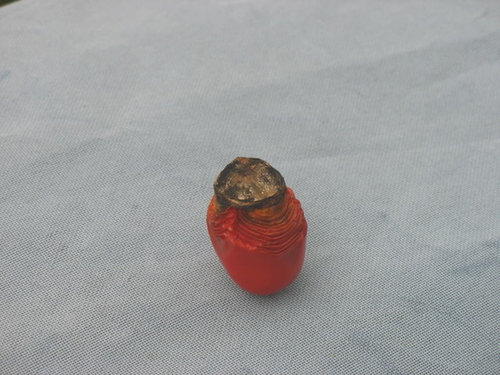What the heck did this???
hortster
11 years ago
Related Stories

ARCHITECTUREWhat the Heck Is 'Good' Design Anyway?
We yearn for it and strive for it, but good home design isn't always easy to grasp. These 8 prescriptions from an architect can help
Full Story
HOUSEKEEPINGHow to Clean a Glass Shower Door
See which tools and methods will keep those glass shower walls and doors sparkling clean
Full Story
LANDSCAPE DESIGNWhat the Heck Is a Ha-Ha, and How Can It Help Your Garden?
Take cues from a historical garden feature to create security and borders without compromising a view
Full Story
HOME OFFICESThe Great Paper Push: Just Say No
Going paperless is a heck of a lot easier when you put the kibosh on letting flyers, junk mail and more get past the front door
Full Story

HOLIDAYS16 Creative Ways to Hide Easter Eggs
Crack of dawn on Sunday not your ideal thinking time? Just follow our creative egg-hiding ideas and pretend Peter Cottontail did the work
Full Story
FUN HOUZZHow to Survive an Epidemic of Walking Dead
Tips to use around the house and garden to prep for the zombie apocalypse
Full Story
KITCHEN DESIGNHouzz Quiz: What Kitchen Countertop Is Right For You?
The options for kitchen countertops can seem endless. Take our quiz to help you narrow down your selection
Full Story
LIFEHow to Celebrate National S’mores Day When You Don’t Have a Campfire
Too hot to toast marshmallows? Never got around to building that fire pit? These recipes are for you
Full StoryMore Discussions













carolyn137
dickiefickle
Related Professionals
Benbrook Landscape Architects & Landscape Designers · Allentown Landscape Contractors · Clayton Landscape Contractors · Dickinson Landscape Contractors · Doctor Phillips Landscape Contractors · East Hanover Landscape Contractors · Fair Oaks Landscape Contractors · Bloomington General Contractors · Chatsworth General Contractors · East Riverdale General Contractors · Villa Park General Contractors · Dent Stone, Pavers & Concrete · American Fork Decks, Patios & Outdoor Enclosures · Haddonfield Decks, Patios & Outdoor Enclosures · Livingston Decks, Patios & Outdoor Enclosurescarolyn137
hortsterOriginal Author
gardener_sandy
carolyn137
gardener_sandy